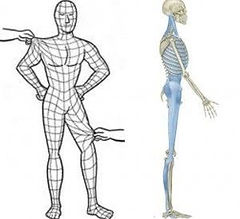Myofascial Release

Muscles make up nearly half of our bodies, yet mainstream medical practices often neglect what’s been called the “orphan organ.” This has made room for alternative manual therapies that use hand movements or massage to skillfully alleviate pain and restore movement and function within the joints and soft tissue. Myofascial release is one such holistic approach.
The term myofascial is derived from myo (muscle) and fascia (the connective tissue that separates and encloses muscle). Myofascial release (MFR) is a massage technique that manipulates muscle tissue and relieves built-up tension in the fascia. It’s been used to treat a variety of chronic disorders.
So how does myofascial release work?
About 36–42% of your body weight is made up of muscles, all which are essential in performing normal activities with ease. However, these muscles can develop trigger points, which can be caused by lack of exercise, repetitive mechanical movements, poor posture, direct injuries, postural imbalance (e.g., unequal leg length), joint disorders, lack of quality sleep, and vitamin deficiencies. These sensitive trigger points result in pain, stiffness, tension, physical limitation, and loss of normal function.
When compressed, trigger points are painful and can radiate pain and tenderness into other areas (referred pain), as well as restrict movement of the affected muscle. More often than not, trigger points occur in muscles used to maintain posture, that is, muscles in the neck, shoulders, and pelvic girdle. Depending on the area, trigger points can cause headaches, tinnitus, joint pain, eye tension or pain, decreased motion in legs, and low back pain.
Various methods can be used to release these trigger points. In myofascial release, the tissue is stretched at a long, slow, and moderate manner in order to restore its optimal length, decrease pain, and improve overall function.4 Unlike other manual therapies that employ deep pressure to the trigger points, myofascial release focuses on gentle pressure and stretching of the area.

How Myofascial Release Helps
According to experts, myofascial release can be effective for a wide range of ailments, including pain, restrictive movement, muscle spasms, neurological dysfunction, head and birth injury, congenital vertebral abnormalities, scoliosis, menstrual and pelvic pain and dysfunction, headaches, geriatrics, sports injuries, pediatrics, chronic fatigue, and more.
The Health Benefits of Myofascial Release
Myofascial release can help soothe the symptoms of:
-
Carpal tunnel syndrome
-
Temporomandibular joint (TMJ) disorder
-
Muscle and joint pain
-
Migraine headaches
-
Back pain
-
Fibromyalgia
-
Injuries due to poor shoulder or hip alignment
Myofascial release therapy eliminates pain caused by muscles or other connective tissues that are “tied down” by tight fascia. Also, damaged fascial tissue can contribute to pain at “trigger points” that restrict blood flow to nearby areas, causing the damage to spread.
Some undergo myofascial release treatments to achieve better muscular and skeletal alignment before surgery. Others use it to increase their sports performance.



